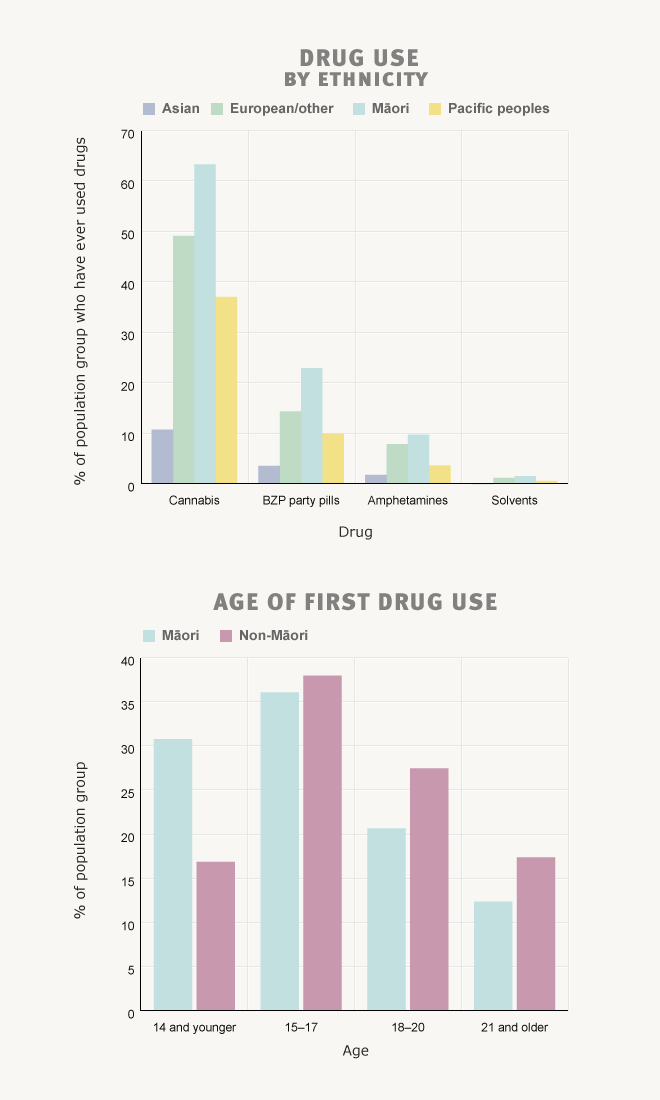
These graphs, based on data from a large Ministry of Health study in 2007–8, explain two aspects of drug use. The first graph compares the age at which Māori and non-Māori first used drugs for recreational purposes. The second shows the estimated rate of use among Māori and non-Māori of marijuana, BZP party pills, amphetamines and solvents.
The second diagram needs to be read with some caution, as differences in the age structure of ethnic groups affects their rate of use. The Māori population has a high number of people in their teens and 20s, when drug use peaks. This is one reason why Māori have a higher overall rate of use compared with the European population, which includes more older people. If the groups' age structure was standardised, the difference between the populations would diminish. Nor does a higher rate of use mean that a greater number of people in total are using a drug. In the case of solvents, Māori use as a percentage of the total Māori population is greater than that of Pākehā. But the study estimated that 5,900 Māori used solvents, while 24,300 Pākehā did.
Using this item
Te Ara - The Encyclopedia of New Zealand
This item has been provided for private study purposes (such as school projects, family and local history research) and any published reproduction (print or electronic) may infringe copyright law. It is the responsibility of the user of any material to obtain clearance from the copyright holder.






Add new comment